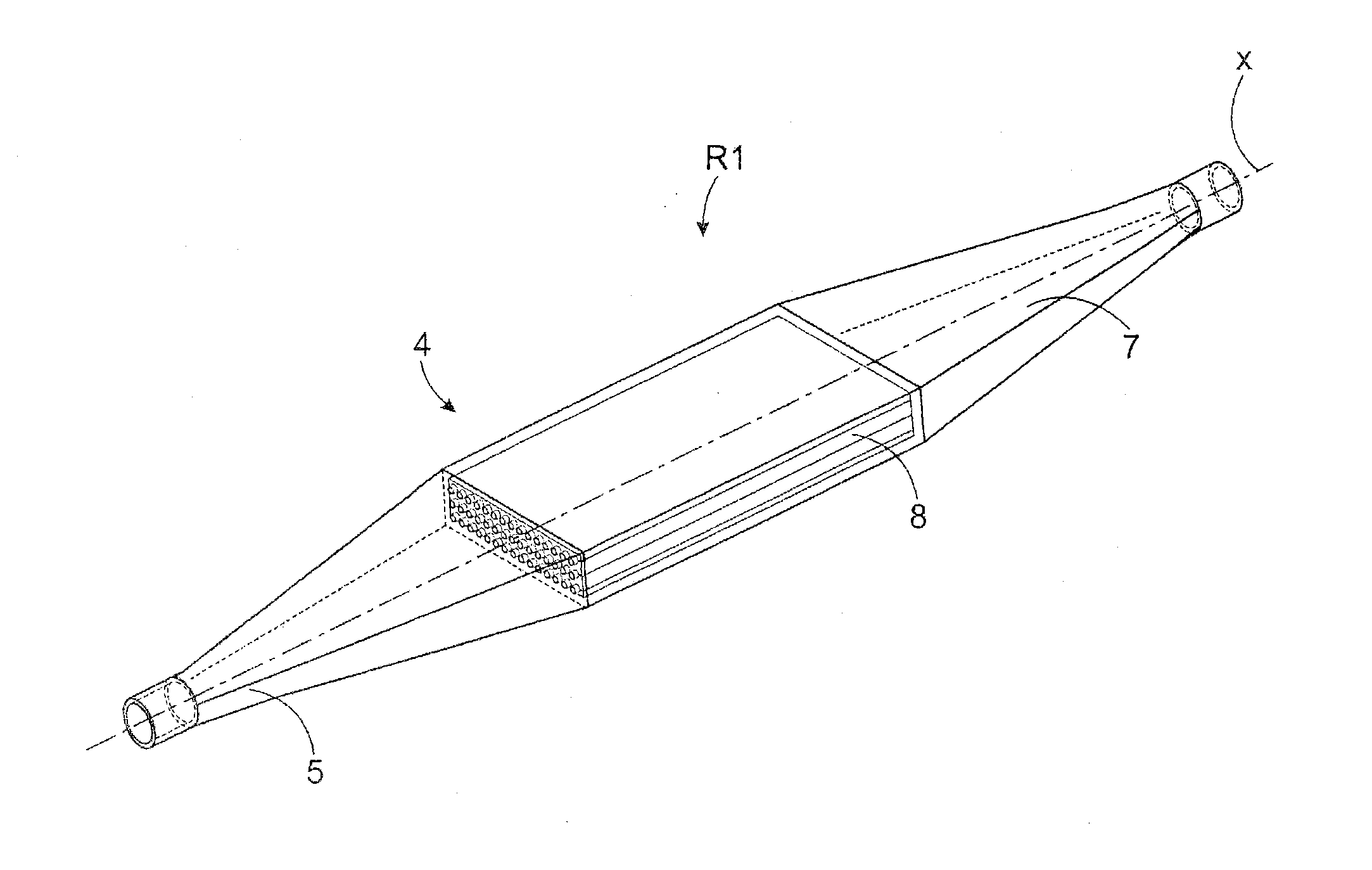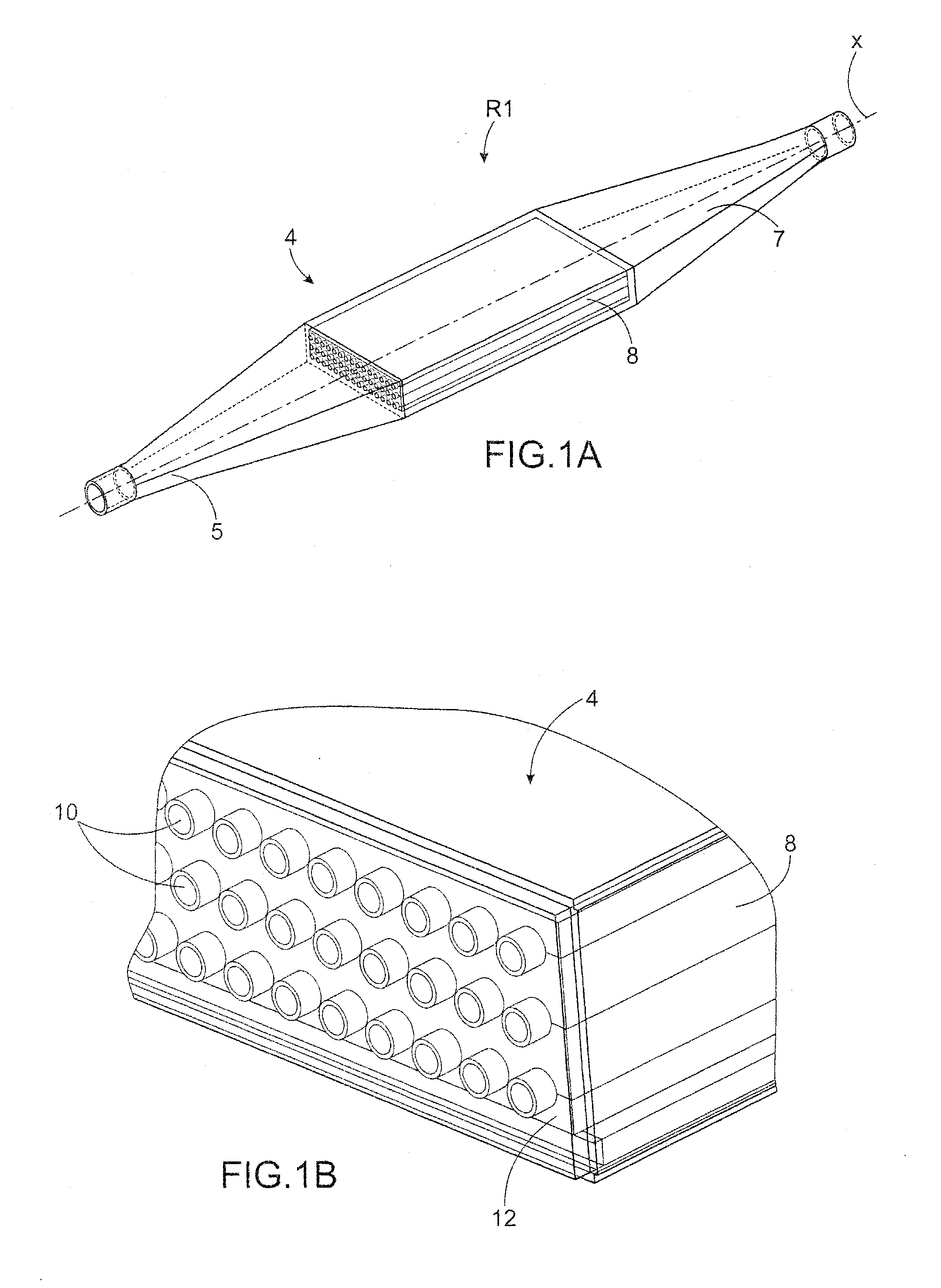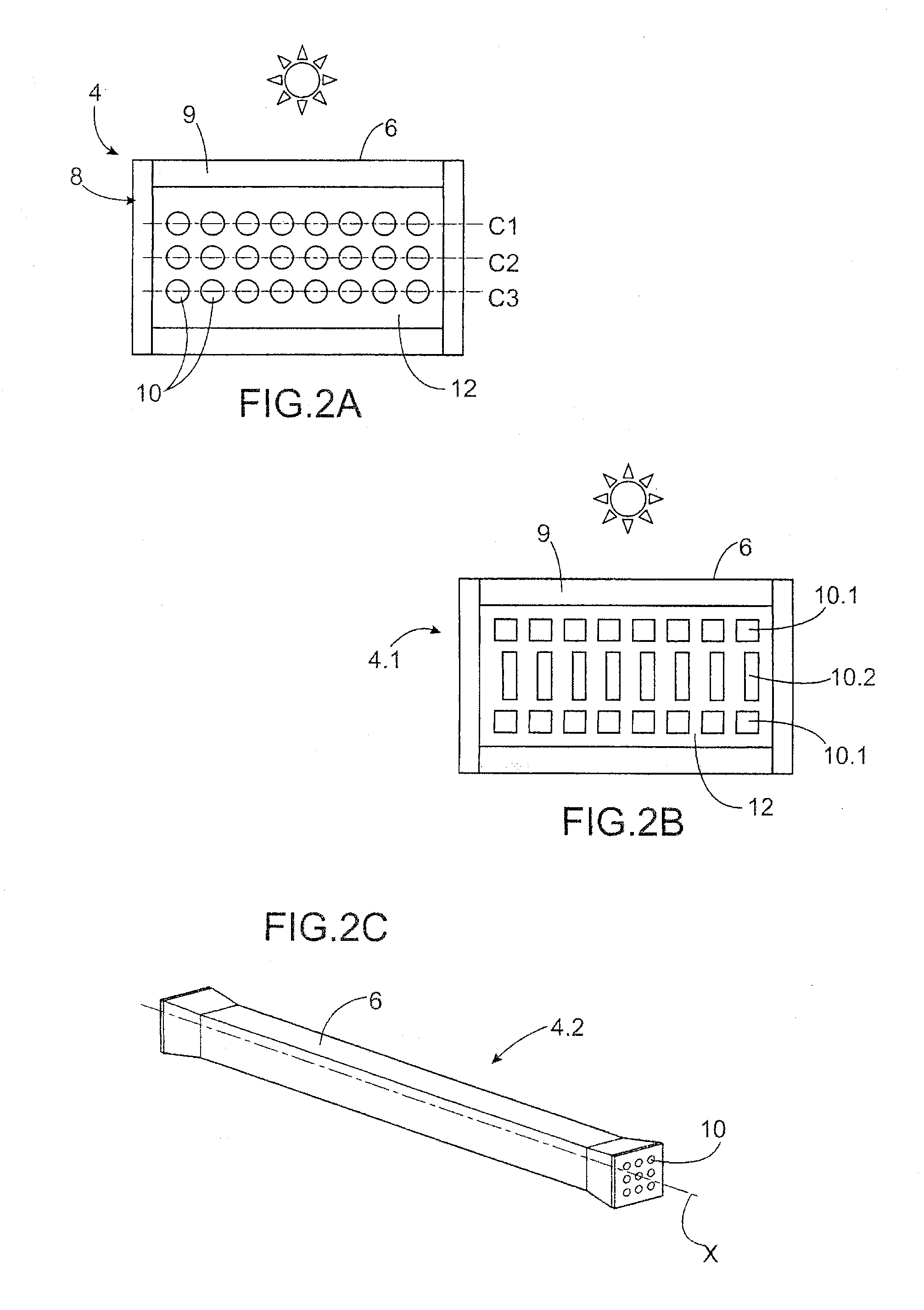Solar receiver absorber and solar receiver comprising at least one such absorber
a solar receiver and absorber technology, applied in the field of solar receiver absorbers, can solve the problems of significant temperature difference between the illuminated face and the solar receiver, high operating temperature, and harsh conditions of the solar receiver
- Summary
- Abstract
- Description
- Claims
- Application Information
AI Technical Summary
Benefits of technology
Problems solved by technology
Method used
Image
Examples
first embodiment
[0028]FIG. 1A is a perspective view of a receiver according to the invention
[0029]FIG. 1B is a detailed view of FIG. 1A,
[0030]FIG. 2A is a cross-section view of an example of an embodiment of a solar receiver absorber according to the present invention,
[0031]FIG. 2B is a cross-section view of an alternative embodiment in FIG. 2A,
[0032]FIG. 2C is a perspective view of an absorber according to the present invention comprising three layers of three tubes,
[0033]FIG. 2D is a perspective view of a further alternative embodiment of an absorber according to the present invention,
[0034]FIG. 3 is a cross-section view of a further example of an embodiment of an absorber according to the present invention comprising an additional heat storage area,
[0035]FIGS. 4A and 4B are cross-section views of alternative embodiments of an absorber according to the present invention using phase-change materials,
[0036]FIG. 5A is a side view of an absorber according to the present invention during the assembly ...
second embodiment
[0042]FIG. 9 is a schematic representation of a receiver according to the present invention superimposed with the solar flux map,
[0043]FIG. 10 is a schematic representation of a further example of a receiver according to the second embodiment,
[0044]FIGS. 11A and 11B are schematic perspective views of the front face and rear face, respectively of a practical embodiment of the receiver in FIG. 10,
[0045]FIGS. 12, 13 and 14 are schematic representations of various connection modes between absorbers of a receiver according to the second embodiment,
[0046]FIG. 15 is a schematic representation of a further example of a modular receiver according to the second embodiment,
[0047]FIG. 16 is a graphic representation of the progression of the temperature in ° C. of the fluid and of the absorber panel to be illuminated if the cold fluid supplies the absorbers situated in a high-flux area, and the absorbers situated in a low-flux area are supplied with the fluid outflowing from the absorbers situat...
PUM
| Property | Measurement | Unit |
|---|---|---|
| temperatures | aaaaa | aaaaa |
| inlet temperature | aaaaa | aaaaa |
| outer diameter | aaaaa | aaaaa |
Abstract
Description
Claims
Application Information
 Login to View More
Login to View More - R&D
- Intellectual Property
- Life Sciences
- Materials
- Tech Scout
- Unparalleled Data Quality
- Higher Quality Content
- 60% Fewer Hallucinations
Browse by: Latest US Patents, China's latest patents, Technical Efficacy Thesaurus, Application Domain, Technology Topic, Popular Technical Reports.
© 2025 PatSnap. All rights reserved.Legal|Privacy policy|Modern Slavery Act Transparency Statement|Sitemap|About US| Contact US: help@patsnap.com



